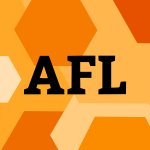37 papers:
 HIMI-IKC-2015-WangN #analysis #identification #matrix
HIMI-IKC-2015-WangN #analysis #identification #matrix- Dot Matrix Analysis of Plant Operation Data for Identifying Sequential Alarms Triggered by Single Root Cause (ZW, MN), pp. 152–158.
 KDD-2015-Kaban #bound #random
KDD-2015-Kaban #bound #random- Improved Bounds on the Dot Product under Random Projection and Random Sign Projection (AK), pp. 487–496.
 HIMI-DE-2014-PohlSKAM #usability
HIMI-DE-2014-PohlSKAM #usability- Evaluating the Dot-Based Contingency Wheel: Results from a Usability and Utility Study (MP, FS, SK, BA, SM), pp. 76–86.
 SAC-2014-ShinJLY #automaton #design
SAC-2014-ShinJLY #automaton #design- Design of a cellular automata cell with rule 30 on quantum-dot cellular automata (SHS, JCJ, GJL, KYY), pp. 1749–1750.
 CHI-2013-TockerCSC #eye tracking #visualisation
CHI-2013-TockerCSC #eye tracking #visualisation- Individual user characteristics and information visualization: connecting the dots through eye tracking (DT, CC, BS, GC), pp. 295–304.
 DUXU-WM-2013-Gould #network
DUXU-WM-2013-Gould #network- Dot, Line, Network: Helping Individuals Make Sense of “New Data” (EWG), pp. 496–505.
 ICML-c1-2013-GongGS #adaptation #invariant #learning
ICML-c1-2013-GongGS #adaptation #invariant #learning- Connecting the Dots with Landmarks: Discriminatively Learning Domain-Invariant Features for Unsupervised Domain Adaptation (BG, KG, FS), pp. 222–230.
 TFPIE-2012-ODonnell #education #functional #hardware #using
TFPIE-2012-ODonnell #education #functional #hardware #using- Connecting the Dots: Computer Systems Education using a Functional Hardware Description Language (JTO), pp. 20–39.
 AFL-J-2011-KufleitnerL12
AFL-J-2011-KufleitnerL12- Around dot-Depth One (MK, AL), pp. 1323–1340.
 ICPR-2012-HuynhL #clustering #crowdsourcing
ICPR-2012-HuynhL #clustering #crowdsourcing- Connecting the dots: Triadic clustering of crowdsourced data to map dirt roads (AH, AL), pp. 3766–3769.
 DATE-2011-BruschiPRS #automaton #performance
DATE-2011-BruschiPRS #automaton #performance- An efficient Quantum-Dot Cellular Automata adder (FB, FP, VR, DS), pp. 1220–1223.
 ICDAR-2011-DuAL #detection #performance
ICDAR-2011-DuAL #detection #performance- Dot Text Detection Based on FAST Points (YD, HA, SL), pp. 435–439.
 AFL-2011-KufleitnerL
AFL-2011-KufleitnerL- Around Dot-Depth One (MK, AL), pp. 255–269.
 LICS-2011-KufleitnerL #infinity #word
LICS-2011-KufleitnerL #infinity #word- Languages of Dot-Depth One over Infinite Words (MK, AL), pp. 23–32.
 DocEng-2010-NamaneSM #feature model #matrix #recognition #using
DocEng-2010-NamaneSM #feature model #matrix #recognition #using- Degraded dot matrix character recognition using CSM-based feature extraction (AN, EHS, PM), pp. 207–210.
 DLT-2010-LodayaPS
DLT-2010-LodayaPS- Around Dot Depth Two (KL, PKP, SSS), pp. 303–315.
 KDD-2010-ShahafG
KDD-2010-ShahafG- Connecting the dots between news articles (DS, CG), pp. 623–632.
 SAC-2009-VomelTM #quantum
SAC-2009-VomelTM #quantum- Bulk based preconditioning for quantum dot computations (CV, ST, OM), pp. 961–965.
 OCSC-2007-MorrisonG #interactive #named #network #social #visualisation
OCSC-2007-MorrisonG #interactive #named #network #social #visualisation- ConnectDots: Visualizing Social Network Interaction for Improved Social Decision Making (DM, BG), pp. 134–140.
 ICSM-2006-Sneed #migration #testing
ICSM-2006-Sneed #migration #testing- Selective Regression Testing of a Host to DotNet Migration (HMS), pp. 104–112.
 DLT-2006-GlasserTW #polynomial
DLT-2006-GlasserTW #polynomial- Perfect Correspondences Between Dot-Depth and Polynomial-Time Hierarchy (CG, SDT, KWW), pp. 408–419.
 ICPR-v2-2006-BaiH #case study #normalisation #online #recognition
ICPR-v2-2006-BaiH #case study #normalisation #online #recognition- A Study of Nonlinear Shape Normalization for Online Handwritten Chinese Character Recognition: Dot Density vs. Line Density Equalization (ZLB, QH), pp. 921–924.
 ICPR-v2-2006-ChenB06a #kernel
ICPR-v2-2006-ChenB06a #kernel- Function Dot Product Kernels for Support Vector Machine (GC, PB), pp. 614–617.
 DLT-J-2004-BorchertLSTT05 #polynomial
DLT-J-2004-BorchertLSTT05 #polynomial- The dot-depth and the polynomial hierarchies correspond on the delta levels (BB, KJL, FS, PT, DT), pp. 625–644.
 DAC-2004-AntonelliCDHKKMN #automaton #clustering #modelling #problem
DAC-2004-AntonelliCDHKKMN #automaton #clustering #modelling #problem- Quantum-Dot Cellular Automata (QCA) circuit partitioning: problem modeling and solutions (DAA, DZC, TJD, XSH, ABK, PMK, RCM, MTN), pp. 363–368.
 DATE-v2-2004-TahooriL #automaton #design #quantum #testing
DATE-v2-2004-TahooriL #automaton #design #quantum #testing- Testing of Quantum Dot Cellular Automata Based Designs (MBT, FL), pp. 1408–1409.
 DLT-2004-BorchertLSTT #polynomial
DLT-2004-BorchertLSTT #polynomial- The Dot-Depth and the Polynomial Hierarchy Correspond on the Delta Levels (BB, KJL, FS, PT, DT), pp. 89–101.
 CHI-2004-LampeR #distributed #online #scalability
CHI-2004-LampeR #distributed #online #scalability- Slash(dot) and burn: distributed moderation in a large online conversation space (CL, PR), pp. 543–550.
 DAC-2003-Bernstein #automaton
DAC-2003-Bernstein #automaton- Quantum-dot cellular automata: computing by field polarization (GHB), pp. 268–273.
 DocEng-2003-ZhuN #encoding
DocEng-2003-ZhuN #encoding- Information encoding into and decoding from dot texture for active forms (BZ, MN), pp. 105–114.
 CHI-2002-AccotZ #interface
CHI-2002-AccotZ #interface- More than dotting the i’s — foundations for crossing-based interfaces (JA, SZ), pp. 73–80.
 DAC-2000-NiemierKK #design #novel #quantum #tool support
DAC-2000-NiemierKK #design #novel #quantum #tool support- A design of and design tools for a novel quantum dot based microprocessor (MTN, MJK, PMK), pp. 227–232.
 ICPR-v1-2000-KruizingaP #analysis
ICPR-v1-2000-KruizingaP #analysis- A Nonlinear Texture Operator Specialized in the Analysis of Dot-Patterns (PK, NP), pp. 1197–1201.
 ICSE-2000-Horn
ICSE-2000-Horn- Dot com versus bricks and mortar — the impact of portal technology (abstract of invited presentation) (CH), p. 4.
 ICPR-1996-DattaPC #self
ICPR-1996-DattaPC #self- Skeletal shape extraction from dot patterns by self-organization (AD, SKP, BBC), pp. 80–84.
 ICALP-1986-Straubing
ICALP-1986-Straubing- Semigroups and Languages of Dot-Depth 2 (HS), pp. 416–423.
 ICALP-1979-FichB
ICALP-1979-FichB- A Characterization of a Dot-Depth Two Analogue of Generalized Definite Languages (FEF, JAB), pp. 230–244.
 HIMI-IKC-2015-WangN #analysis #identification #matrix
HIMI-IKC-2015-WangN #analysis #identification #matrix KDD-2015-Kaban #bound #random
KDD-2015-Kaban #bound #random HIMI-DE-2014-PohlSKAM #usability
HIMI-DE-2014-PohlSKAM #usability SAC-2014-ShinJLY #automaton #design
SAC-2014-ShinJLY #automaton #design CHI-2013-TockerCSC #eye tracking #visualisation
CHI-2013-TockerCSC #eye tracking #visualisation DUXU-WM-2013-Gould #network
DUXU-WM-2013-Gould #network ICML-c1-2013-GongGS #adaptation #invariant #learning
ICML-c1-2013-GongGS #adaptation #invariant #learning TFPIE-2012-ODonnell #education #functional #hardware #using
TFPIE-2012-ODonnell #education #functional #hardware #using AFL-J-2011-KufleitnerL12
AFL-J-2011-KufleitnerL12 ICPR-2012-HuynhL #clustering #crowdsourcing
ICPR-2012-HuynhL #clustering #crowdsourcing DATE-2011-BruschiPRS #automaton #performance
DATE-2011-BruschiPRS #automaton #performance ICDAR-2011-DuAL #detection #performance
ICDAR-2011-DuAL #detection #performance AFL-2011-KufleitnerL
AFL-2011-KufleitnerL LICS-2011-KufleitnerL #infinity #word
LICS-2011-KufleitnerL #infinity #word DocEng-2010-NamaneSM #feature model #matrix #recognition #using
DocEng-2010-NamaneSM #feature model #matrix #recognition #using DLT-2010-LodayaPS
DLT-2010-LodayaPS KDD-2010-ShahafG
KDD-2010-ShahafG SAC-2009-VomelTM #quantum
SAC-2009-VomelTM #quantum OCSC-2007-MorrisonG #interactive #named #network #social #visualisation
OCSC-2007-MorrisonG #interactive #named #network #social #visualisation ICSM-2006-Sneed #migration #testing
ICSM-2006-Sneed #migration #testing DLT-2006-GlasserTW #polynomial
DLT-2006-GlasserTW #polynomial ICPR-v2-2006-BaiH #case study #normalisation #online #recognition
ICPR-v2-2006-BaiH #case study #normalisation #online #recognition ICPR-v2-2006-ChenB06a #kernel
ICPR-v2-2006-ChenB06a #kernel DLT-J-2004-BorchertLSTT05 #polynomial
DLT-J-2004-BorchertLSTT05 #polynomial DAC-2004-AntonelliCDHKKMN #automaton #clustering #modelling #problem
DAC-2004-AntonelliCDHKKMN #automaton #clustering #modelling #problem DATE-v2-2004-TahooriL #automaton #design #quantum #testing
DATE-v2-2004-TahooriL #automaton #design #quantum #testing DLT-2004-BorchertLSTT #polynomial
DLT-2004-BorchertLSTT #polynomial CHI-2004-LampeR #distributed #online #scalability
CHI-2004-LampeR #distributed #online #scalability DAC-2003-Bernstein #automaton
DAC-2003-Bernstein #automaton DocEng-2003-ZhuN #encoding
DocEng-2003-ZhuN #encoding CHI-2002-AccotZ #interface
CHI-2002-AccotZ #interface DAC-2000-NiemierKK #design #novel #quantum #tool support
DAC-2000-NiemierKK #design #novel #quantum #tool support ICPR-v1-2000-KruizingaP #analysis
ICPR-v1-2000-KruizingaP #analysis ICSE-2000-Horn
ICSE-2000-Horn ICPR-1996-DattaPC #self
ICPR-1996-DattaPC #self ICALP-1986-Straubing
ICALP-1986-Straubing ICALP-1979-FichB
ICALP-1979-FichB









